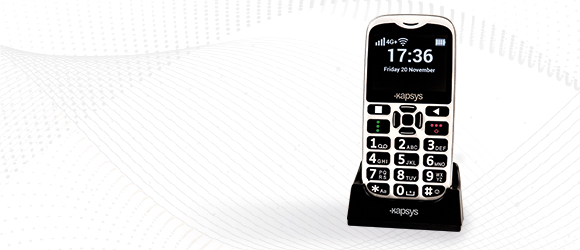Empowering Independence With Assistive Technology for the Blind
The integration of assistive modern technology into the lives of people with visual impairments stands for a significant innovation in promoting independence and self-sufficiency. From ingenious screen readers to advanced wise walking canes, these tools not just improve everyday navigation and communication however additionally empower users to involve meaningfully in various aspects of life. As we check out the myriad advantages and real-world applications of these innovations, it becomes essential to examine the underlying aspects that add to their efficiency and the capacity for future developments in this crucial area.
Overview of Assistive Technology

The advancement of assistive innovation is grounded in principles of inclusivity and empowerment. Technologies in software, hardware, and sensory enhancements provide individuals with options tailored to their particular needs. From display readers that convert message to speech, to tactile devices that convey details through touch, these devices change the means people engage with their environments.
In enhancement to sensible applications, assistive technology fosters greater social addition and engagement in various fields, including education and learning and employment (Voice-activated assistive devices). As r & d remain to progress, the possibility for assistive innovation to even more boost the lives of visually damaged people continues to be promising, leading the way for an extra equitable culture where everyone can prosper
Kinds of Assistive Tools
A range of assistive gadgets have emerged to sustain people with aesthetic impairments, each developed to fulfill specific needs and improve day-to-day performance. These devices vary from low-tech solutions to state-of-the-art innovations, offering diverse alternatives for customers.
Low-tech tools consist of magnifiers and large-print products that assist in reading and writing. Braille tools, such as Braille slates and stylus pens, allow tactile reading and interaction. Positioning and mobility help, like white canes, help users navigate their atmosphere safely.
On the greater end of the range, electronic magnifying systems and display visitors provide significant support. Digital magnifiers enable customers to enlarge message and images on screens, while display viewers convert digital material into manufactured speech, helping with accessibility to information on mobile phones and computer systems.
Smart device applications likewise play a crucial role, offering functions like text acknowledgment and navigating help. Wearable innovation, such as smart glasses geared up with increased reality, is emerging as an encouraging device to enhance situational recognition.
Advantages of Assistive Modern Technology
The integration of assistive modern technology substantially enhances the lifestyle for people with aesthetic impairments. These technologies empower customers by promoting independence, allowing them to browse their environments better and execute everyday tasks with better convenience. Screen visitors and zoom software application allow individuals to accessibility digital information, fostering expert and academic possibilities that might have previously been out of reach.
Moreover, assistive tools such as wise walking sticks and general practitioners applications offer real-time navigating support, improving flexibility and safety. This increased freedom not only boosts self-worth however also urges social engagement, enabling customers to get involved even more completely in their communities.
Assistive technology also promotes interaction, helping users get in touch with others with voice acknowledgment and text-to-speech applications. This capability is vital for keeping connections and accessing essential information.
In addition, the personalization choices available with many assistive modern technologies guarantee that customers can tailor gadgets to their certain demands, even more enhancing functionality and performance. In general, the benefits of assistive technology for people with aesthetic problems are extensive, advertising a much more comprehensive society where everyone can seek their objectives and goals.
Instance Studies and Success Stories
Highlighting the transformative impact of assistive innovation, countless instance studies highlight just how individuals with visual impairments have efficiently integrated these tools right into their day-to-days live. One engaging instance involves a college student that used display reading software to navigate online resources and scholastic products effectively. This innovation not just promoted her education yet likewise improved her confidence in joining conversations and team projects.
An additional study includes an expert that utilizes a mobile phone application developed for navigating and object recognition. By using this app, he has actually regained autonomy in both his personal and workplace, enabling him to commute individually and engage with colleagues better.
In addition, a retired person shared her experience with braille e-readers, which allowed her to access a vast range of literary works and remain linked with her neighborhood with publication clubs.
These success stories highlight the vital function of assistive innovation in cultivating freedom, improving top quality of life, and promoting social assimilation for people with aesthetic disabilities (Mobility aids for visually impaired users). By welcoming these innovative tools, users can overcome obstacles and take opportunities that add to their professional and individual gratification

Future Patterns in Assistive Innovation
Technology in assistive innovation is positioned to redefine the landscape of support that site for individuals with visual disabilities. Arising trends emphasize the integration of fabricated intelligence (AI) and artificial intelligence, which boost the functionality of tools that assist with navigation and info access. AI-driven applications are now qualified of analyzing aesthetic data in real-time, allowing customers to engage with their setting extra separately.
Moreover, the development of wearable innovation is progressing rapidly. Smart glasses outfitted with augmented fact (AR) can provide audio descriptions of environments, transforming just how individuals communicate with public areas. These tools not just advertise autonomy however additionally foster social inclusion.
Additionally, the Net of Points (IoT) is making homes smarter, permitting smooth connection between daily home appliances and assistive tools. This connectivity encourages users by allowing automatic responses and voice-activated controls customized to specific requirements.
Conclusion
In verdict, assistive technology plays a critical function in equipping individuals with visual impairments by boosting their freedom and engagement with their surroundings. The varied series of applications and tools offered not only promotes navigation and communication however additionally advertises social assimilation and opportunities for individual and professional development. As improvements continue in this field, the possibility for enhancing the lifestyle for those with aesthetic problems will increase, fostering higher autonomy and empowerment.
